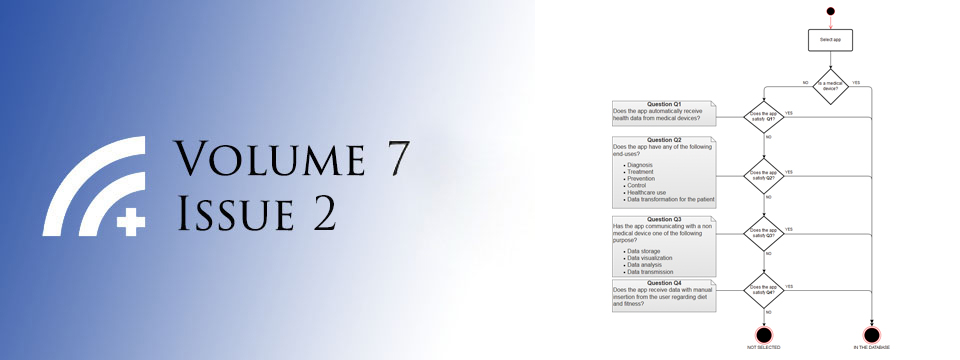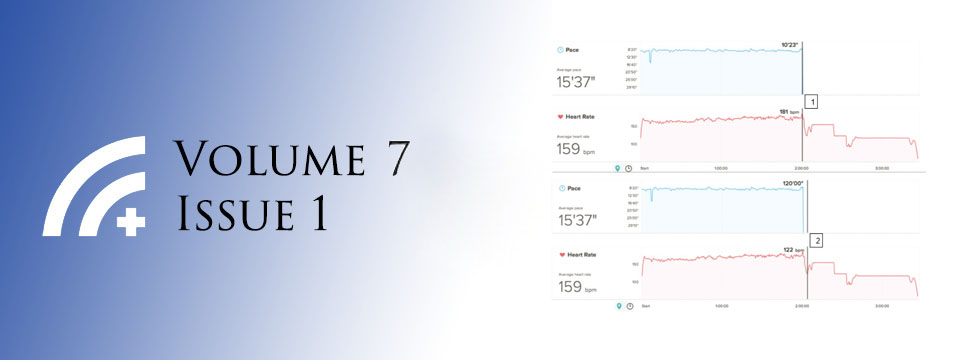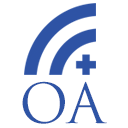Posted on Jul 16, 2019 in Original Article |
Sariah Khormaee MD PhD1, Athena Nguyen2, Esther Bartlett3, Michael Lwin4, Peter Chang MD5, Misja Ilcisin6
1Hospital for Special Surgery, Orthopedic Surgery
2Santa Clara University College of Arts and Sciences
3Santa Clara University College of Arts and Sciences
4KoeKoe Tech Co., Ltd
5Washington University, Orthopaedic Surgery
6KoeKoe Tech Co., Ltd
Corresponding author: sariah.khormaee@gmail.com
Journal MTM 8:1:29–36, 2019
doi:10.7309/jmtm.8.1.4
Background: There is incredible potential for telemedicine to advance postoperative care. Work in high-income nations shows the potential to use mobile phones to monitor postoperative recovery progress. However, there is little information about the attitudes of people in low resource countries, like Myanmar, toward the adoption of mHealth in postoperative care.
Aims: This study presents survey results collected in Myanmar to better understand cultural attitudes of this population towards adopting mHealth technologies to improve postoperative patient care.
Methods: A thirteen-question survey was developed, focused on demographic questions and attitudes towards physicians, the internet, and willingness to perform tasks on their mobile phones. Respondents were selected in a sample of convenience in urban and rural public spaces.
Results: Of the 125 people approached, 112 agreed to participate in the survey. A wide range of ages (18-78), genders (55.4% female), locations (22.3% rural, 77.7% urban) and ethnicities (67% Burmese) were represented. 85.7% were willing to make contact with a surgeon in a hypothetical postoperative setting via mobile phone. 83.0% were willing to fill out a survey about their postoperative state and 69.6% were willing to send a picture of their wound with their surgeon via mobile phone. A majority of respondents had a very high level of trust in physicians in general, most already owned a mobile phone with access to the internet and used it to look up health information.
Conclusion: Our results indicate that Myanmar could provide a promising location for the implementation of mHealth technologies to improve post-operative care.
Keywords: mobile health, telecare, health information on the Web, ehealth, assistive technologies
Posted on Dec 19, 2012 in Articles, Original Article |
Dr Rahul Chakrabarti MBBS1,2
1 Editor-In-Chief, Journal of Mobile Technology in Medicine, 2Centre for Eye Research, Australia
Corresponding Author: rahul@journalmtm.com
Journal MTM 1:4:1-3, 2012
DOI:10.7309/jmtm.70
The capacity for mobile technology to play an important role in facilitating patient care in low-resource settings was evidenced by the recent 9th General Assembly of the International Agency for Prevention of Blindness (IAPB) held in Hyderabad, India. Amongst the major priorities emphasised by the Vision 2020 consortium was the goal to provide universal coverage and access to services to preserve sight. Fundamental to achieving this target was the need to strengthen health systems by development and provision of accessible and affordable health technology.1 The conference theme was ‘eye care – it’s everyone’s business’, exhibited excellent examples of innovation and scientific rigour in the application of telemedicine and mobile health in the field of ophthalmology.
Posted on Jul 16, 2019 in Original Article |
John B. Kellogg, BA1, Jessica D. Lee2, Daniel R. Murphy, MD, MBA1,3, Monisha Arya, MD, MPH1,3
1Baylor College of Medicine, One Baylor Plaza, Houston, TX 77030, USA;
2Rice University, 6100 Main St, Houston, TX 77005, USA;
3Center for Innovation in Quality, Effectiveness and Safety, Michael E. DeBakey VA Medical Center, 2002 Holcombe Blvd, Houston, TX 77030, USA;
Corresponding Author: Kellogg@bcm.edu
Journal MTM 8:1:20–28, 2019
doi:10.7309/jmtm.8.1.3
Background: Despite the prevalence of hepatitis C virus (HCV) and the availability of effective treatments, HCV screening remains suboptimal, in part due to primary care physicians’ (PCPs) unawareness of and discomfort discussing HCV risk factors. Patient-facing text message campaigns may overcome these barriers by empowering patients to initiate screening discussions with their PCPs.
Aims: The objectives were to evaluate a patient-facing text message campaign in terms of (1) feasibility, (2) acceptability, and (3) impact on patient-PCP discussions about HCV screening.
Methods: Primary care patients were recruited to receive either an HCV text message, which contained HCV information and a prompt to discuss HCV with their PCPs, or a calcium control text message. Forty minutes before their appointments, participants were sent their assigned text message. Participants were then called for an evaluation of the text message campaign.
Results: Of 185 patients called, 38 enrolled and completed the study. Participants who were sent an HCV text message (n=25) were significantly more likely to initiate a conversation with their PCPs about HCV screening than participants sent a calcium control text message (n=13) (p=0.008). Thirty-two (82%) participants liked receiving a health-related text message (88% in the HCV group; 70% in the control group).
Conclusions: A patient-facing HCV text message campaign shows promise as a novel method to activate primary care patients to initiate HCV screening discussions with their PCPs. This campaign may help educate patients about the importance of HCV screening, overcome physician barriers to screening, and, ultimately, help control the HCV epidemic.
Keywords: hepatitis C, text messaging, physician-patient relations, preventive health services, primary health care
Posted on Dec 20, 2012 in Articles, Original Article |
Dr Jimmy Tseng MBBS1
1Department of Neurosurgery, Austin Health, Australia
Corresponding Author: drjt87@gmail.com
Journal MTM 1:4:4-10, 2012
DOI:10.7309/jmtm.71
Background: Many smartphone applications are currently available for neurosurgeons to use in integrating with their clinical practice, complementing with aids for patients, diagnosis tools and education in both neuroanatomy and neuropathology.
Purpose: To provide a comprehensive review and comparison of apps available to neurosurgeons in the United States and Australia.
Methods: Searches were made on Apple Inc App Store on both the United States and Australian stores and described in detail according to the website.
Results: 42 apps were found and compared in costs, ratings, functionality and app size. The majority of apps had no reviews, and there were only 2 apps that were not available on both the United States and Australian App Stores.
Conclusion: While there are no significant differences between the United States and Australian App Stores for neurosurgical apps, there remains a shortage of high quality apps for use in clinical practice. However, there is ongoing improvement with the quality of apps for neurosurgeons.
Posted on Jul 16, 2019 in Original Article |
Karen Hong1, Sean Collon2, David Chang3, Sunil Thakalli4, John Welling4, Matthew Oliva4, Esteban Peralta5, Reeta Gurung6, Sanduk Ruit6, Geoffrey Tabin1,4, David Myung1,7, Suman Thapa6
1Byers Eye Institute, Stanford University School of Medicine
2Vanderbilt University School of Medicine
3Los Altos Eye Physicians, Los Alto, CA
4Himalayan Cataract Project
5University of Florida School of Medicine
6Tilganga Institute of Ophthalmology, Kathmandu, Nepal
7Division of Ophthalmology, Veterans Affairs Palo Alto Health Care System, Palo Alto, CA
Corresponding Author: suman.thapa@tilganga.org
Journal MTM 8:1:1–10, 2019
doi:10.7309/jmtm.8.1.1
Background: To compare screening referral recommendations made by remotely located ophthalmic technicians with those of an ophthalmologist examining digital photos obtained by a portable ophthalmic camera system powered by an iOS handheld mobile device (iPod Touch).
Methods: Dilated screening eye exams were performed by ophthalmic technicians in four remote districts of Nepal. Anterior and posterior segment photographs captured with a Paxos Scope ophthalmic camera system attached to an iPod Touch 6th generation device were uploaded to a secure cloud database for review by an ophthalmologist in Kathmandu. The ophthalmic technicians’ referral decisions based on slit-lamp exam were compared to the ophthalmologist’s recommendation based on the transmitted images.
Results: Using the transmitted images, the ophthalmologist recommended referral for an additional 20% of the 346 total subjects screened who would not have been referred by the ophthalmic technician. Of those subjects, 34% were referred to the retina clinic. Conversely, among the 101 patients referred by the technician, the ophthalmologist concurred with the appropriateness of referral in more than 97% of cases but thought eight (2.8%) of those patients had variants of normal eye pathology.
Conclusion: An ophthalmologist who reviewed data and photos gathered with the mobile device teleophthalmology system identified a significant number of patients whose need for referral was not identified by the screening technician. Posterior segment pathology was most frequently found by the remote reader and not by the technician performing dilated slit lamp examinations. These results are promising for further clinical implementation of handheld mobile devices as tools for teleophthalmic screening in resource-limited settings.
Keywords: telemedicine, rural population, ophthalmology, referral and consultation, global health
Posted on Dec 20, 2012 in Articles, Original Article |
Dr Simon Hews MBBS1, Dr Perri Chambers MBBS1
1Department of Gastroenterology,Austin Health, Australia
Corresponding Author: simonhew@hotmail.com
Journal MTM 1:4:11-15, 2012
DOI:10.7309/jmtm.72
Background: The prioritisation of patients with end-stage liver disease for liver transplantation requires a quantification of clinical disease severity. The Model for End-Stage Liver Disease (MELD) score is used to prognosticate survival for these patients and is therefore useful to prioritise for transplantation. The MELD score utilises a complex equation, which is now available for calculation using a range of smartphone applications (‘apps’). There is however no published data on the precision of these app-based calculators in calculating a MELD score.
Methods: In a cohort of 46 adults patients awaiting liver transplantation, the precision of 14 free and pay-for-use Apple iPhone app-based MELD score calculators in calculating the MELD score was compared with the actual MELD equation using kappa statistics.
Results: Kappa statistics demonstrated agreement of 0.70 to 0.97 (mean of 0.78; 95% CI, 0.6 – 0.95) between the app-based calculators and the MELD equation.
Conclusion: This study showed substantial but not perfect precision of app-based MELD score calculators compared to the actual MELD equation. This is an important finding in assessing the validity of app-based MELD score calculators and further studies evaluating the growing number and availability of app-based medical calculators are required.








